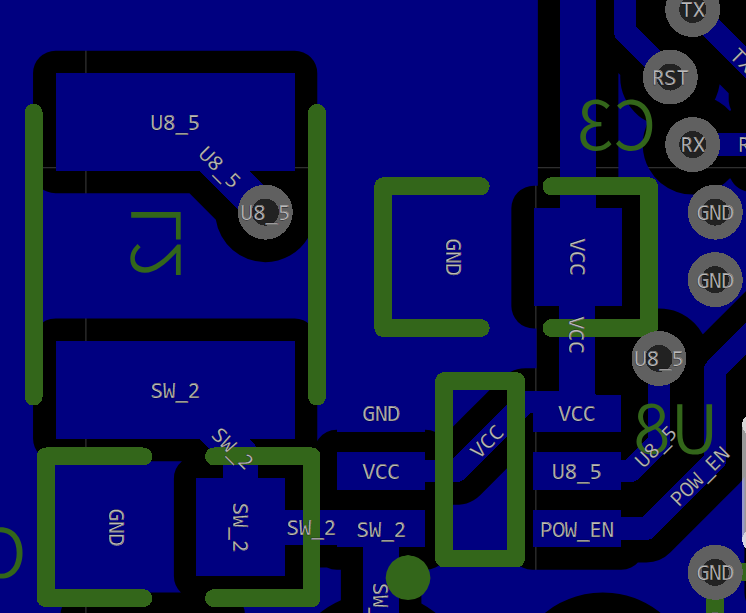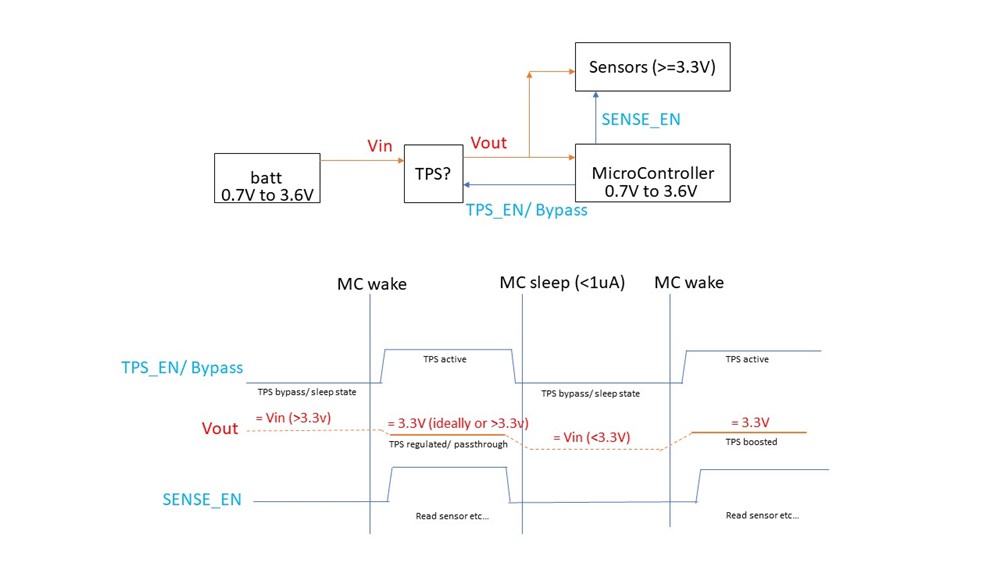Other Parts Discussed in Thread: TPS61020, TPS62730, TPS61097A-33, TPS61291, TPS61201
Hi,
Need your help.
While designing a low-power circuit for driving an at328p mc and a couple of sensors attached off a 14505 LiSoCl 3.7v battery.
BOM:
NR3010T4R7M 4.7uH 1.02A, GRM188R60J106ME47J 10uF
Schematic (as in datasheet): Vin is connected to pin 1 of the switch on the top left.
1. Vout should be equal to Vin when EN pin is pulled low. However, this doesn't seem to be the case in our experiments. We found Vout to be ~2.8V when Vin was ~3.5V. What could be the cause of this drop?
Could this be caused by the output capacitor not being placed close to tps61221 as seen below? (It is actually located next to the Vcc pin of the microcontroller).
Would the following alternate layout help?
2. What happens if Vout is pulled to 3.3V (say by the an ISP programmer connected to the MC on the other side, Vout, of the tp61221) and Vin is not connected to any power source (isolated by a physical switch). Is this likely to result in some malfunction?
3. What if both Vin and Vout are connected to two different 3.3v supplies (battery, programming header)? EN pin is likely to be pulled LOW in these scenarios.
Thanks.
Anupam
| GRM188R60J106ME47J |





